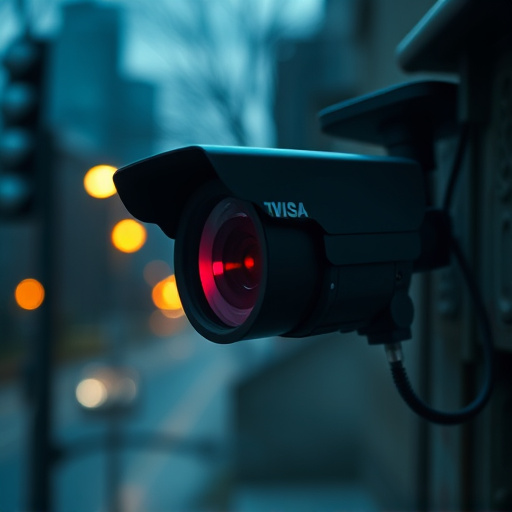Wireless surveillance equipment, while advanced, faces challenges in detection due to its realistic decoys. Skilled technicians can still locate hidden cameras using specialized gear. Deploying Most Realistic Looking Security Decoys as visual deterrents misdirects intruders but requires strategic placement and ethical considerations. Balancing technology with legal aspects ensures effective security without compromising privacy. Heat maps and AI enhance location tracking, providing insights for improved security strategies.
“Uncover the art of wireless surveillance equipment location detection with our comprehensive guide. Explore the intricate world of security systems, from understanding the technology to mastering placement techniques. Discover the power of realistic-looking most realistic looking security decoys that misdirect potential threats, filling detection gaps. Learn how advanced technologies like heat maps and AI enhance precision, while navigating legal considerations for ethical use and privacy. Elevate your surveillance strategy today.”
- Understanding Wireless Surveillance Equipment: Uncovering Detection Gaps
- The Power of Realistic Security Decoys: A Visual Misdirection Strategy
- Placement Matters: Strategizing Visible vs. Hidden Cameras
- Advanced Technology: Heat Maps and AI for Location Precision
- Legal Considerations: Ethical Use and Privacy Concerns in Surveillance
Understanding Wireless Surveillance Equipment: Uncovering Detection Gaps
Wireless surveillance equipment has evolved, with many devices appearing almost indistinguishable from everyday objects. While this realism enhances their effectiveness as monitoring tools, it also presents a unique challenge when it comes to location detection and counter-surveillance. The most advanced systems can mimic legitimate items like plants or rocks, making them hard to distinguish from genuine surroundings. This realism, however, is where gaps in detection emerge.
Despite their appearance, these devices often transmit signals that can be detected by specialized equipment. Skilled technicians can identify unusual wireless patterns and locate hidden cameras or sensors, even when they’re well-disguised as security decoys. Understanding the limitations of current detection methods is crucial for developing effective countermeasures against these sophisticated yet vulnerable technologies.
The Power of Realistic Security Decoys: A Visual Misdirection Strategy
In today’s digital age, wireless surveillance equipment has become a common sight across various landscapes. To counter this, a strategic and increasingly popular approach is the deployment of realistic security decoys—visually convincing fakes designed to mislead and confuse would-be intruders. These decoys serve as powerful tools in creating a false sense of security or directing attention away from actual surveillance equipment. By integrating highly authentic replicas into an environment, potential threats are subjected to visual misdirection, making it harder for them to identify genuine sensors.
The most realistic-looking security decoys are crafted with meticulous attention to detail, incorporating advanced materials and designs that mimic the appearance of real surveillance devices. From camera lenses to motion detectors, these decoys are meticulously engineered to blend seamlessly into their surroundings. This strategic misdirection not only enhances overall security but also offers cost savings by deterring would-be thieves or vandals who may otherwise target valuable equipment for removal or sabotage.
Placement Matters: Strategizing Visible vs. Hidden Cameras
Placement is key when it comes to wireless surveillance equipment, especially when strategizing between visible and hidden cameras. While realistic-looking security decoys can be an effective way to deter potential intruders, discreetly positioning them is equally important for successful surveillance. High-quality decoys that mimic real security devices like motion sensors or floodlights can be placed openly to send a clear message that your property is under watch.
However, hidden cameras should be carefully and strategically positioned to avoid detection while capturing clear footage. This might involve mounting them in hard-to-see spots like corners, behind objects, or integrating them into everyday items. Remember, the most effective wireless surveillance systems strike a balance between visible deterrents and discreet monitoring, creating a layered security approach that protects your space.
Advanced Technology: Heat Maps and AI for Location Precision
Wireless surveillance equipment has evolved significantly, incorporating advanced technologies like heat maps and artificial intelligence (AI) to achieve unparalleled location precision. Heat maps, which visually represent activity levels through color-coded zones, help security teams identify high-risk areas within a given space. By analyzing patterns over time, these tools predict potential threats more accurately than ever before. AI, on the other hand, enhances detection by learning and adapting to usual routines, enabling devices to distinguish between genuine activities and false alarms.
This integration of cutting-edge technology in security systems not only improves response times but also allows for the deployment of the most realistic-looking security decoys. These decoys mimic real equipment while providing valuable data on potential intruders’ behaviors and strategies, further fortifying overall security measures.
Legal Considerations: Ethical Use and Privacy Concerns in Surveillance
When deploying wireless surveillance equipment, it’s crucial to consider legal and ethical boundaries to ensure responsible use. The use of technology for monitoring and location detection raises significant privacy concerns. In many jurisdictions, there are strict regulations in place regarding surveillance practices to protect individuals’ rights and personal spaces. Understanding these laws is essential to avoid legal repercussions and maintain public trust.
One aspect to keep in mind is the use of realistic-looking security decoys as a strategic approach. While they serve as effective deterrents, it’s imperative to use them ethically by placing them openly and clearly marked to avoid misrepresenting active surveillance. This practice helps foster transparency, addressing privacy fears and ensuring compliance with legal frameworks.
Wireless surveillance equipment has evolved, making location detection a complex task. By understanding the technology’s capabilities and limitations, from identifying gaps in detection methods to leveraging advanced heat maps and AI, you can enhance security measures. Additionally, strategically employing realistic-looking security decoys as a visual misdirection technique proves effective. However, it’s crucial to navigate legal considerations regarding privacy to ensure ethical surveillance practices, especially with the rise of sophisticated equipment like most realistic-looking security decoys.
